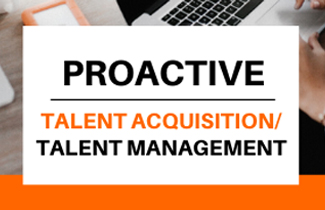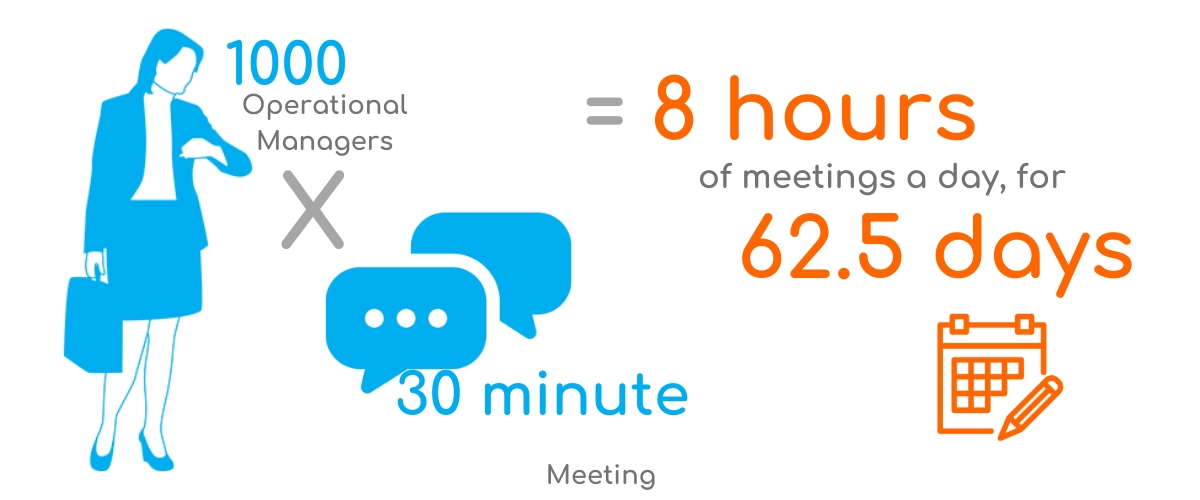
Proactive Talent Acquisition / Talent Management
Proactive Talent Acquisition / Talent Management
February 07, 2023
The benefits of driving a more proactive strategic talent acquisition / management function (5 min read)
Whether you’re a Talent Management or a Talent Acquisition professional, we’ll show you how fixing these will get your CEO’s attention.
First Up; Talent Management
Did you know organisations that have an effective talent management process can increase their earnings by as much as 15%?
An extra 15%? That’s a huge opportunity. Even if we achieved a fraction of this then surely, it’s enough to get the function (and maybe you) the recognition it deserves.
A comforting statement: There is no one size fits all, nor is there one definition to suit everyone. That means you’re not doing it wrong... but probably could be doing it better.
We see lots of examples of how Talent Management and Talent Acquisition are deployed and would like to share quickly how businesses are showcasing great results with some simple tactics.
As Talent Management professionals, we believe a key part of the success of a company is down to how we develop, retain and mobilise our existing talent.
You’re spending piles of cash bringing people in through external recruitment, but if we don’t maximise their potential by creating great talent plans then they’ll bounce out straight away, costing us even more money.
What Does Great Talent Management Help?
Better Succession Planning
Better Performance Management
Improve Unwanted Attrition
Better use of Training/L&D Spend
If this is obvious, then why aren’t we doing it?
2 Reasons (Excuses)...
1st Reason: “…we don’t have great data to work with”
We hear this a lot. That’s where a lot of ’talent’ professionals accept defeat (is that you?) and don’t ask the next question:
"Why don’t we have great data when we have invested big money in a new system?".
There is a big hole in your data. We know. We see it all the time. (It’s why we exist) (We’ll show you how to fix this).
So what does this lead to? Naturally, you focus on the areas where you do have data. Create some great stuff only for it to become undone because those holes in the wider data set start to manifest themselves in reactive ad-hoc fire-fighting talent plans, inefficient pieces of work that suck up all our time.
We vow, like a new year’s resolution, to obtain more data to become proactive. Then it hits us...
2nd Reason: “…why we can’t”
Think about the simple maths involved. If you have 1000 operational managers, then that’s approximately 12.5 weeks of back to back meeting (no breaks!) to capture the actual data.
Then even more time to turn it into any form of meaningful insights.
...oh and then create the Talent Management processes of the back of it (you know, your day job 😊).

So what do we resort to?
The above. The short term reactive low-value processes.
The vicious cycle.
Ad hoc meetings; differing levels of competence within our talent community following different methods of working; sporadic succession planning (sometimes just for the top 100 employees - that’s if you’re lucky); fire-fighting flight risks; business-critical roles going unfilled, and zero chance in becoming strategic about redeploying existing talent. And repeat for another year with the promise we’ll definitely get it fixed next year. (Sound familiar?).
This is where you need to step in with some fresh thinking. Figure out what is important to you and your organisation. Start small and build it up from there.
Imagine if your Talent Management team had the foresight of:
- Every critical skill gap in the business, by business area
- Single points of failure in teams, by business area
- Every role with no succession plans in place
- High performer data, by business area
- L&D requirements per individual
- Plus whatever else was important to you
If you don’t have 12.5 weeks to capture the data (we can show you the calculations behind this) then we’d suggest you have a business case for some clever tech to do the heavy lifting and capture the data on your behalf - freeing you up to make interventions on critical talent management gaps.
If this data was provided to you…
You’d have the full sight of what talent you have and be able to:
- Head off critical flight risks; Reducing unwanted attrition
- Create robust succession plans; Increasing knowledge transfer
- Understand and retain your talent; Improving employee engagement
- Redeploy talent for projects; Improving productivity & speed of project execution
- Create better L&D plans; Saving time and money
But it’s not just saving money.
We know as Talent professionals how much money we could start to impact on the bottom line. It’s huge. It’s CEO exposure huge. We wouldn’t be doing our job if we didn’t already know the impact we could have, "if only we had this data".
With this data, your job becomes instantly easier and gives you the headspace to, dare I say it, finally start doing some of the strategic stuff we’re employed to do.
You can use this data to guide your line managers to take more accountability for the management of their talent. After all, it should be those owning it with our support. But how can we support them if we don’t know what’s going on?
That brings us right back to "We don’t have a way of capturing the initial data".
I bet now you’re thinking…
“Here we go, another system!”
“Our HRIS/ATS/LMS must do this…”
Stop reading, go and check and then come back.
It might have some capability in storing some information… but it doesn’t capture the data for you. That’s where all existing processes fall down. We know this. We fix this problem for customers of Workday, Success Factors, Cornerstone, Cascade - plus everyone else - because they don’t do what we do.
We capture and provide talent data for some of the most complex, fast moving organisations on the planet and it doesn’t end there.
Next up; Talent Acquisition
“Understanding your future talent demand from your business is paramount to you having a proactive recruitment team.”
Surely, we can agree on that statement?
If we don’t know what we’ll need, we’ll always be on the back foot. Not a great place for a forward-thinking Recruitment Leader.
How many times have you heard from colleagues in your business that recruitment is too slow, not capable, doesn’t understand their needs?
Why are they too slow? Too reactive?
3 excuses:
1
They’re too busy
2
They think they can still be proactive when the role hits the ATS
3
They don’t know how to be proactive!
Your recruitment team think that their job starts when a new vacancy hits the ATS
(You might want to read our blog on Pre-Recruitment)
That’s all they’ve ever known about how recruitment works. They are too busy trying to fill current live demand to even think about what is coming down the line. Think how scary that is. How big a business risk that is. Your TA team is not even thinking 3-6-9-12 months ahead for your talent needs.
They need you to think more strategically for them.
You need to educate them on the importance of extracting future demand information from all aspects of the business and how it will transform the TA delivery and credibility.
When you can retrieve future demand from your line managers in a simple and effective way, you will:
- Reduce need for costly agencies
- Increase direct hiring
- Improve quality of talent
- Streamline media spend
- Remodel the TA function
- Improve business productivity
- Impact bottom line revenue
- Improve hiring manager experience
- Improve candidate experience
- Improve diversity & inclusion
This data should underpin every decision your recruitment leader makes.
Proactive recruitment starts well before the hiring manager thinks about going to the ATS. We know this. You know this. Your recruitment team might not.
Because your recruitment team is busy, they don’t find out about the vacancy until it hits the ATS. Now it’s too late and this will invariably lead to a costly empty seat in the business (a big commercial no-no). More and more of our HRD customers are starting to show the positive commercial impact that reducing empty seats in the business has on the bottom line to their C-level peers.
If you want to know more about calculating and the impact of Empty Chair Time in your organisation, drop us a line.
“Your recruitment team think having fancy candidate sourcing tools, the latest tech on job adverts and shiny assessment tools is “being proactive”. However, we know proactivity is about heading off the problem before it starts – not after.”
In short:
You need a simple way of retrieving all the future demand gaps for reasons like retirements, flight risks, internal movement, maternity, growth, org change, projects, new sales, etc. Having this information will result in a huge financial impact on your business and big credibility gains for your recruitment team. That’s what we do. We do it for other large organisations in every sector and we see the results first-hand.
So far the ‘why’ all sounds like common sense? Well, it is. Nothing more. We can show you ‘how’.
Another reason that puts even the most forward-thinking recruitment leader off putting effort into this process is that they’re already too busy. Think how flawed that logic is.
By having the foresight of what is coming down the line, they will be in a much better place to provide a more consultative and strategic approach to filling more roles, faster with often less effort required.
We all know the old adage, ‘Fail to plan, plan to fail’.
That’s how effective our approach has been for many HR leaders. We provide the data that you and your recruitment team can use to plan their delivery.
We support organisations to transform their recruitment team by allowing them to make more informed decisions and thus provide a much better service to your hiring managers.
Now start to think "wouldn’t having some of this information start to impact succession planning, internal mobility, etc.?" Yes, it would.
Now you can see how both functions should be intrinsically linked with this data.
If you’d like to know more about:
- How other organisations retrieve this valuable data source
- Some accurate financial ROI on the impact we’ve seen
- How our customers use this to gain exposure to the C-suite